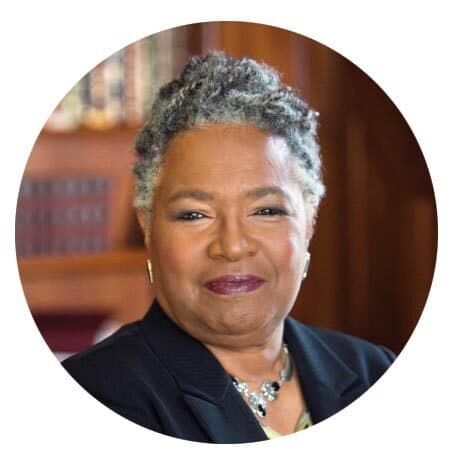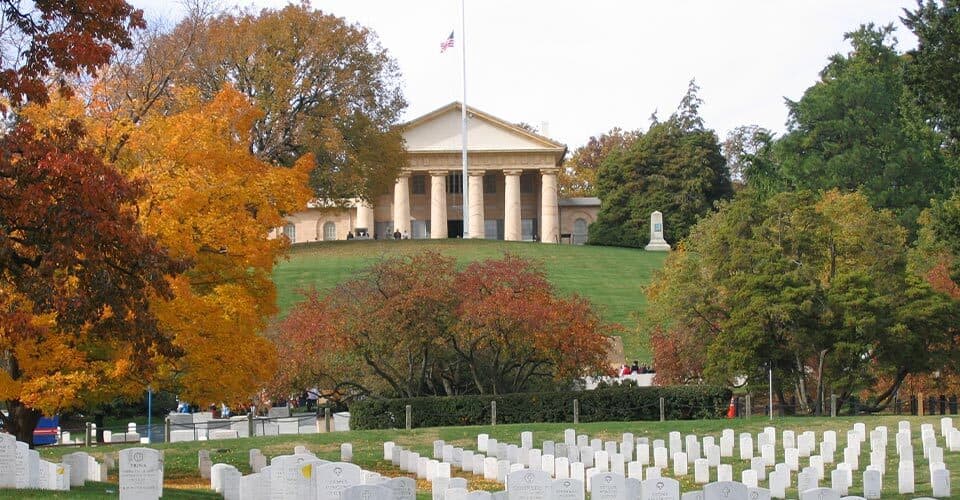In the Shadow of History
At Robert E. Lee’s Former Residence, Researcher Opens Door to Overlooked Legacies
By Maggie Haslam
Portrait courtesy of Cheryl LaRoche
Photo by Acroterion/Wikimedia Commons
The view from Arlington House, Robert E. Lee’s former home perched atop Arlington National Cemetery, is both majestic and mournful: D.C.’s monumental skyline stands in the distance, while a sea of Union and Confederate Army gravestones just steps from the Southern general’s front door serves as a reckoning and reminder of the Civil War’s human cost.

But it’s what’s hidden from view that occupies Associate Research Professor Cheryl LaRoche Ph.D. ’04. The archaeologist and historic preservationist is piecing together the stories of the enslaved men, women and children who lived and worked at the mansion, people whose contributions to the wealth of a nation are often overlooked.
“You can’t talk about this house without talking about enslavement,” she says. “There is not a space among this mansion that an enslaved person did not touch.”
Arlington House was built on Virginia’s side of the Potomac River in 1802 to memorialize George Washington and house a collection of his artifacts. The first example of Greek Revival architecture in America, it was passed down to Lee’s wife, Mary, four years before Virginia seceded from the United States. After the war, the U.S. government took ownership of Arlington House; the National Park Service (NPS) received jurisdiction in 1933. NPS and Arlington House descendants hired LaRoche and her team in 2022 to lead an ethnographic history of the mansion.
Uncovering the lives of the enslaved is a fraught process, says LaRoche, who has consulted on dozens of projects around the 19th century Black experience. In the chaos of the Civil War, records were often burned or scattered across multiple repositories, if they existed at all. Some enslaved bore no last names, and families were frequently broken up as owners died, acquired more land or sold the individuals as chattel.
“It’s the perfect crime scene because they’ve wiped the murder weapon clean,” she says. “There’s no pathway for what we’re doing here.”
LaRoche and her team are tenacious, though, using oral histories, tombstones, photographs, written documentation and landscape mapping—a protocol for ethnography she developed during her dissertation at UMD—to tell a broader, more inclusive story.
That story might help spur major changes at the house. In recent years, descendants of Robert E. Lee, as well as the Parks, Grays and Syphaxes—enslaved people who worked there—have come together to petition a name change from “Arlington House, The Robert E. Lee Memorial” to simply Arlington House.
“I think when you call it the Arlington House, you’re just opening it up to more of the families who lived there,” Rob Lee, Robert E. Lee’s great-great-grandson, told NPR last year.
0 Comments
Leave a Reply
* indicates a required field

